Many amateur gardeners dream of having a coffee tree in their collection. Some of them believe that only specialists can cultivate it. However, this is a fallacy. Arabica coffee is an indoor plant that can be grown at home on the windowsill, if the plant is properly maintained.
Arabica coffee is a perennial shrub or small tree from the Marenov family. His homeland is Africa or Asia, currently it is grown in many countries of the world.
The flower is distinguished by a dense bright green shiny foliage. The leaf plates are sharp at the ends, with well-defined veins. Branches-trunks are slender, thin and at the same time very flexible. In height, they can reach 15 cm.
But most of all, the coffee plant is loved for its flowers, similar to small stars, very reminiscent of jasmine flowers. These white petals with an incredibly pleasant aroma can be seen in spring when the buds open.
They bloom just a couple of days. And after 6 months, fruits of red or black color appear on this place. In their shape they resemble cherries, but oblong in shape. In each such "cherry" two coffee beans are formed. It is they who delight coffee lovers in the morning.
Content
Caring for an Arabica coffee flower at home
Caring for the coffee tree at home involves observing the temperature regime, proper watering, maintaining the required level of light and humidity. In addition, it is necessary to constantly feed the plant and ensure that there are no pests.
Location and lighting
An African guest will enjoy the very lit side of the apartment, but without direct sunlight. An east or west window would be ideal. In the warmer months, the coffee bush can be taken out onto the balcony, sheltering from the sun and rain.
Temperature
In winter, it is important to monitor the air temperature. It should not fall below 15 ° C. Coffee does not like cold. Drafts and sudden changes in temperature, as well as too dry air, badly affect the flower. All this can destroy the plant.
 You may be interested in:
You may be interested in:Watering and humidity
High humidity is contraindicated in a flower. Because of it, various pests can appear. For them, this is a beneficial environment. Dangerous and very dry air. Humidity should not be lower than 40%. Spray the plant only if it is very hot and there is no way to take it to the balcony. In winter and in the heat, you can use electric air humidifiers. The main sign of dry indoor air is the yellowed tips of the coffee leaves.
Arabica coffee is fussy and in watering. Do not use tap water for irrigation. It contains a lot of chlorine, lime and all sorts of impurities that can harm the roots. It is best to take the sludge.And in order for the water to benefit, you can add a few drops of lemon juice or vinegar to it. This is necessary for normal soil acidity. There is no need to fill the flower - he does not like it.
It is very important to monitor the condition of the soil. If it is too wet, the plant will fade and begin to drop leaves. Fatal to coffee and excessive dryness. Therefore, it is better to water the flower little by little, but more often.
Top dressing
An important role in the proper care of coffee is played by top dressing. It is necessary for the flower to grow strong and healthy. Experts recommend the use of liquid mineral fertilizers containing phosphorus, potassium and nitrogen. You can replace them with natural bone meal or horn chips in a ratio of 200 g per 10 kg of soil.
It is best to feed coffee during the period of active growth, at least once every six weeks. It is necessary to do this at different periods of its development. So, with the advent of buds, a large amount of nitrogen and phosphorus is needed, which is necessary for the ripening of fruits. During flowering, a complex of minerals is best suited. It will not be superfluous to determine the PH of the soil for the correct selection of the necessary nutrition. You can do this at the flower shop.
Diseases and Pests
Like any other plant, coffee can be attacked by pests and get sick. A monthly warm shower is very useful for the plant. This should be done carefully, trying to prevent water from falling into the pot. All this will not only make the leaves shiny and beautiful, but also help prevent the appearance of a spider mite. This is the main pest that can appear on plants. The main signs of the spider mite are a small spider web, as well as light spots on the leaves.
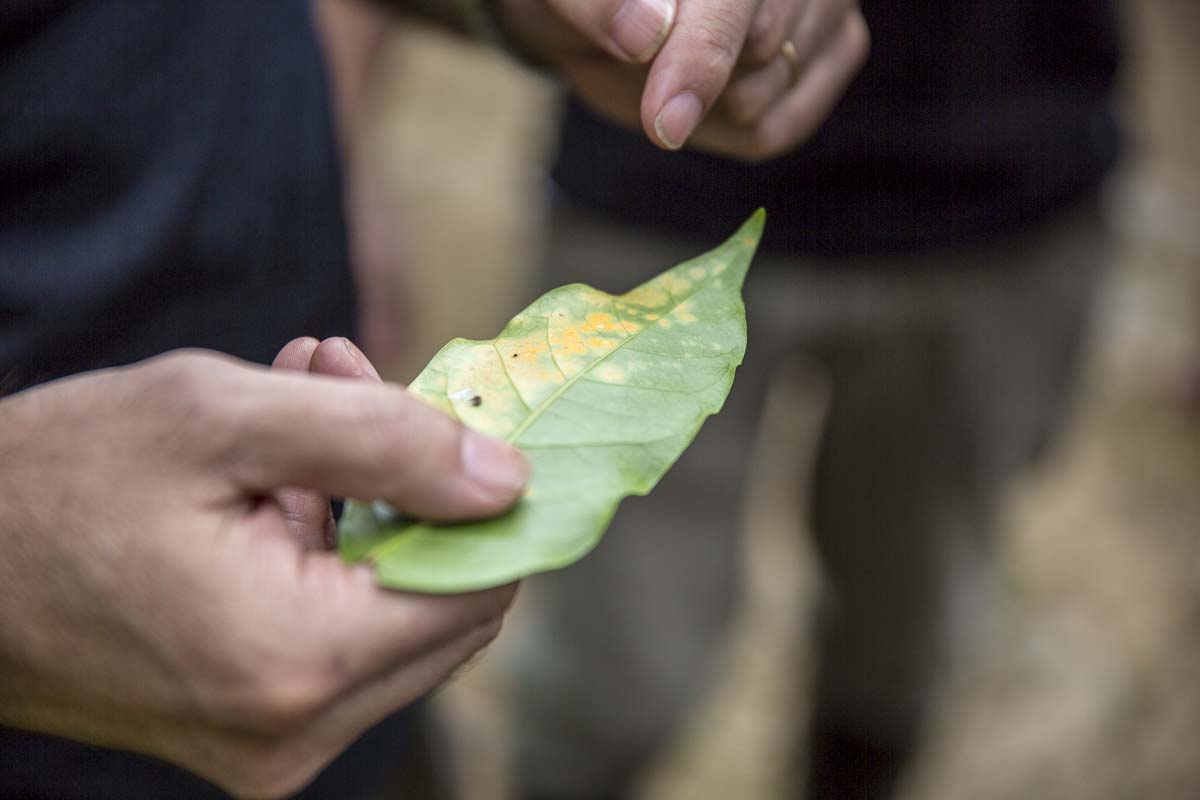
Often, the plant is damaged by a scale and aphid. To combat these parasites, first of all, you need to treat the damaged leaves with a soap solution, and after that you can use store preparations. The most popular are Karbofos or Actellik 0.15%. They are diluted in a ratio of 10 drops per half liter of water. More than one spray may be needed at intervals of several days. Regular alcohol will also help get rid of aphids.
A fungus can destroy the plant. It is easy to recognize by the spots of red color, which resemble rust. Getting rid of it is quite difficult. Bordeaux liquid, copper sulfate or antifungal preparations for indoor plants will help. But you can apply all this only after reading the instructions.
 You may be interested in:
You may be interested in:Arabica coffee can also suffer from bacterial or viral infections. At the same time, yellowed leaves and trunk are the main signs of damage. To get rid of them, it is necessary to treat coffee with a solution of potassium permanganate or copper sulfate, removing damaged areas.
In addition, due to improper care, non-compliance with the temperature and humidity levels, the leaves of the plant may turn black, turn yellow and dry. For the same reason, and due to improperly selected soil, the flower may not bloom.
Propagation and transplant of arabica coffee flower at home
A coffee tree can be propagated in two ways: seeds and cuttings. Breeding can be done regardless of the time of year.
Seeds
Seeds can be planted immediately after the harvest. They are cleaned of the shell and placed in the ground to a depth of 0.5 cm to 1 cm. It is best to plant the convex side up. This will allow the kernel to hatch faster. Also, experts advise before planting the seeds to soak in a weak solution of potassium permanganate, and then water the earth with it.
Careful attention should be paid to the choice of soil for planting. It should be loose, permeable and consist of sheet land with washed river sand. Experts recommend sterilizing such a substrate by holding it for several minutes over a pot of boiling water, covering it with a lid.
When all the seeds are already in the ground, they are covered with a jar and left warm for a month or a half. During this time, the first shoots should appear. But you can plant them after the leaves appear.
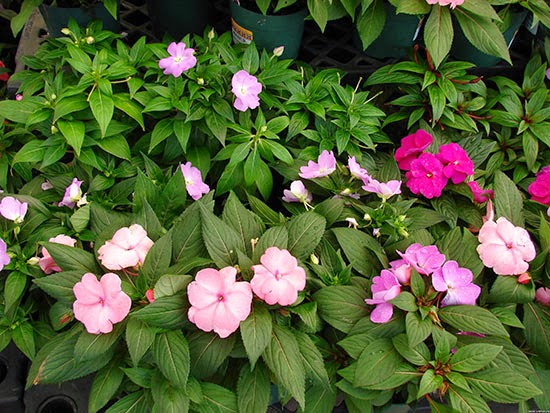 You may be interested in:
You may be interested in:Cuttings
It is much easier to propagate coffee by cuttings. Carefully cut off the semi-woody part of the plant and put in water for rooting, covering with a plastic bag. It is very important that the stalk is well rooted.
There is another way. Cuttings can be purchased in specialized stores and before planting, soak them in a special solution, bought there. This may be a solution of heteroauxin (1 tablet per liter). After 3 hours, prepared cuttings are planted for permanent residence: in the ground for azaleas. Some experts recommend planting a coffee plant in a land suitable for lemons.
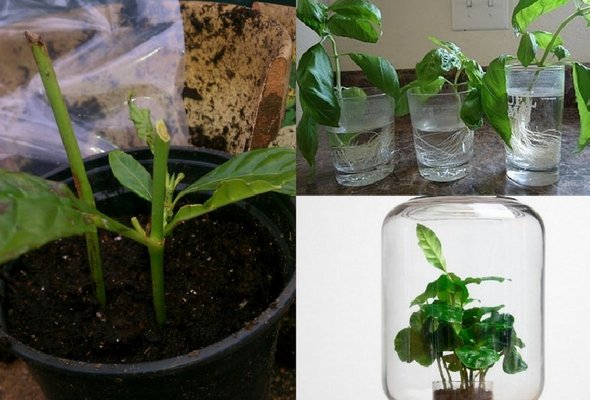
There is also an opinion that for the propagation of coffee by cuttings, a mixture of peat and sand, taken in equal proportions, is suitable. The roots will form in two months. A plant propagated by cuttings will delight the fruits the very next year, but it will grow and develop more slowly. The correct selection of land is of great importance, therefore, this issue must be approached very responsibly.
Transfer
An important stage in the care of coffee is its transplant. Young trees (up to 3 years old) are transplanted annually, then - as needed. This is a very responsible and important event, and you need to treat it with great accuracy. The plant has a very fragile root system, it can easily be damaged.
The roots can be long and tangled. That is why it is necessary to get the flower out of the pot carefully. There is no need to rinse the root system, you just need to remove the excess earth. After the end of the transplant, the plant needs to be watered and for several days to observe its condition.
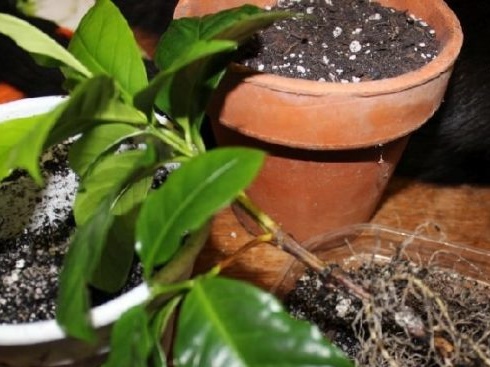
The main thing in transplanting is correctly selected soil. It should be weakly acidic. For example, this: turf land 40%, leaf land 30%, river sand 20%, peat 10% ideal for Arabica coffee.
Common Growing Questions
A coffee tree, emerging from cuttings, is formed in the form of a bush and has a small growth. It would be advisable to tie the upper shoot to the support so that it does not fall and becomes higher. When the flower grows, the support is removed. This is the peculiarity of creating a crown in this case.
Arabica coffee is an exotic plant, but with proper care and comfortable conditions, it will not only decorate the house, but also reward the grower with beautiful flowering and fruits. And what a blessing it is to enjoy a drink from self-grown coffee beans.

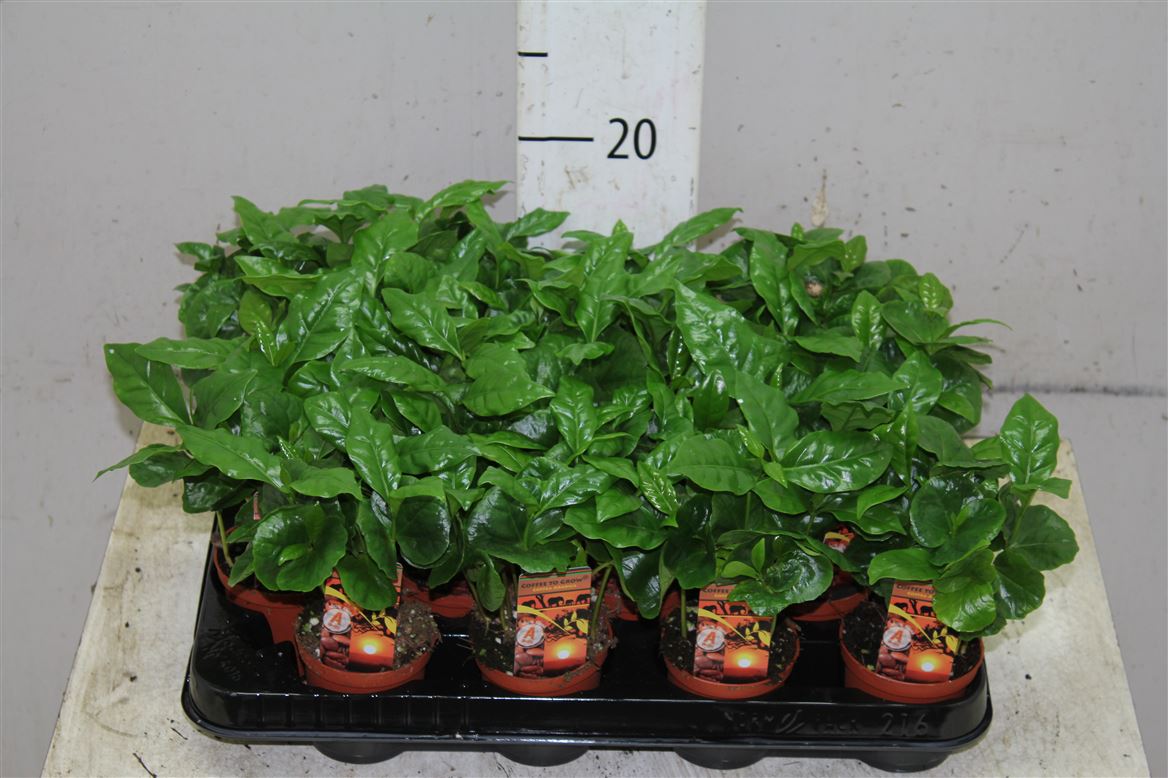


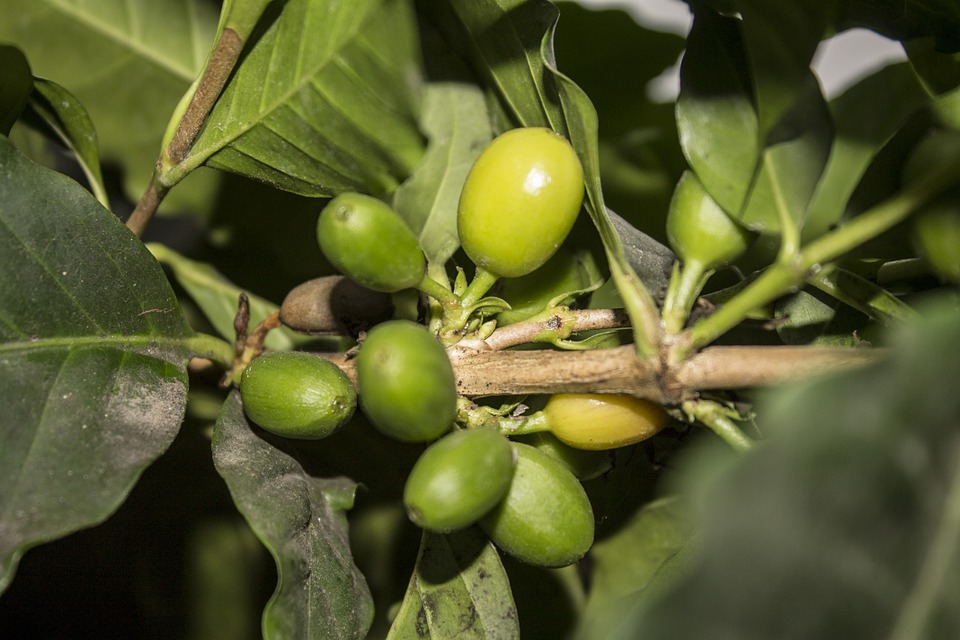
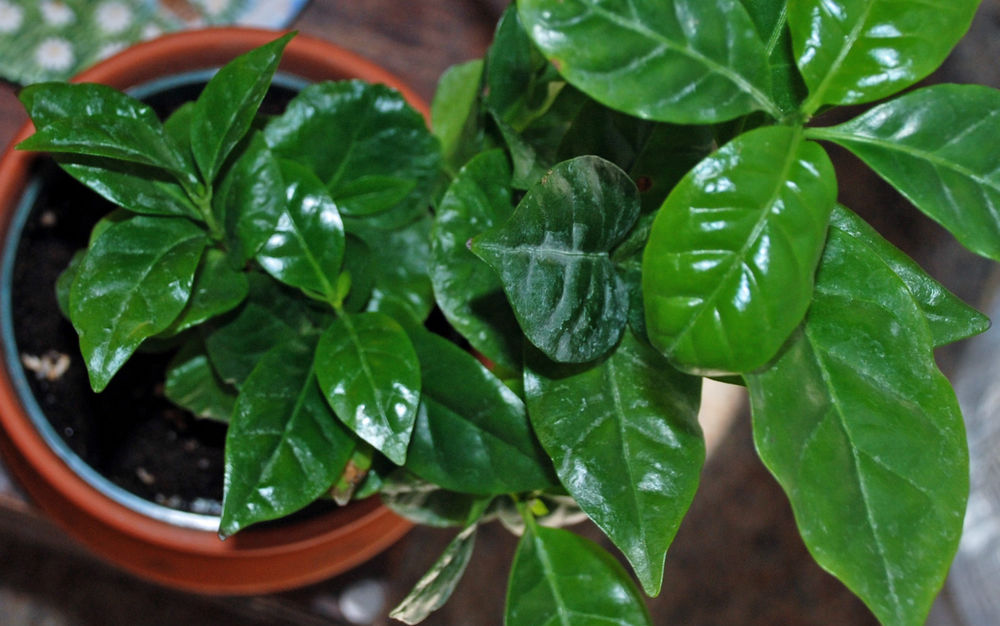
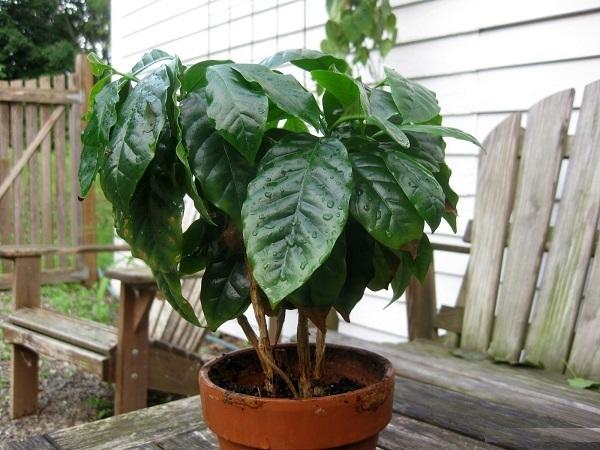



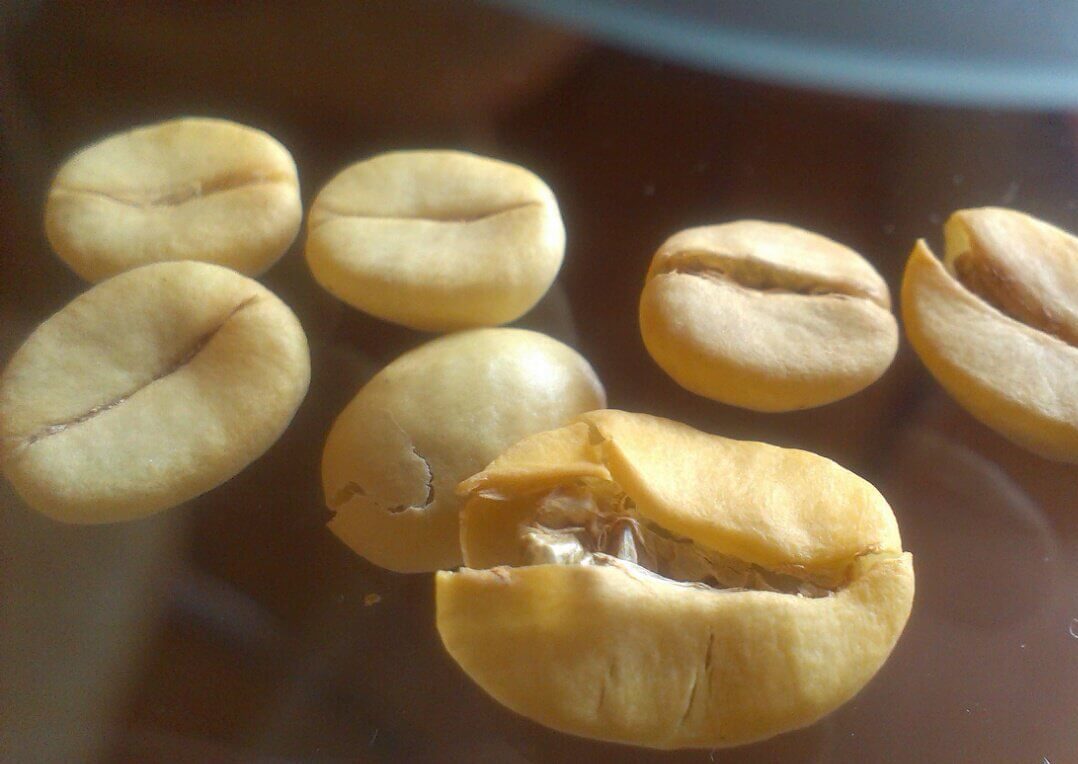
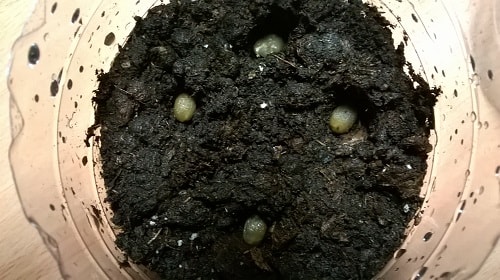
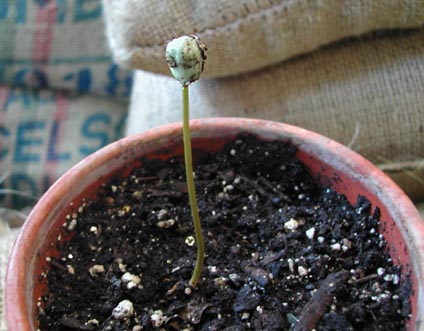
 Sow in the ground, without seedlings: 10 beautiful and unpretentious flowers
Sow in the ground, without seedlings: 10 beautiful and unpretentious flowers Platicodon planting and outdoor care
Platicodon planting and outdoor care Hosta - planting and care in the open ground in the Urals
Hosta - planting and care in the open ground in the Urals Oleander - care and growing at home
Oleander - care and growing at home